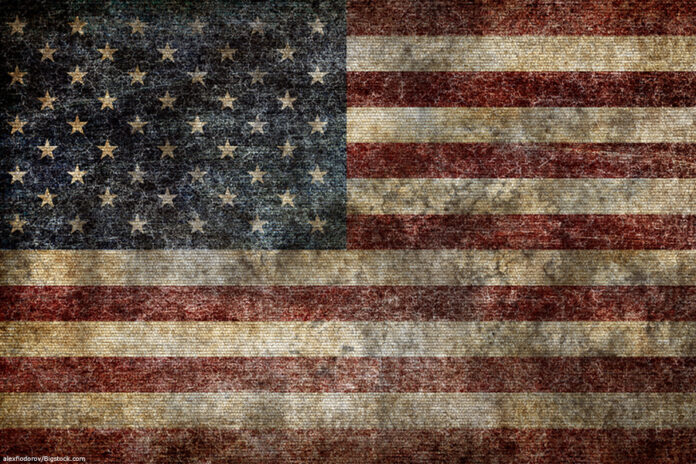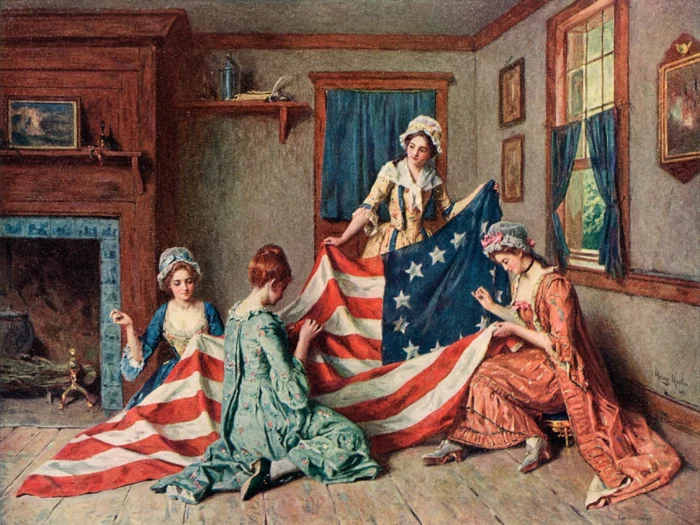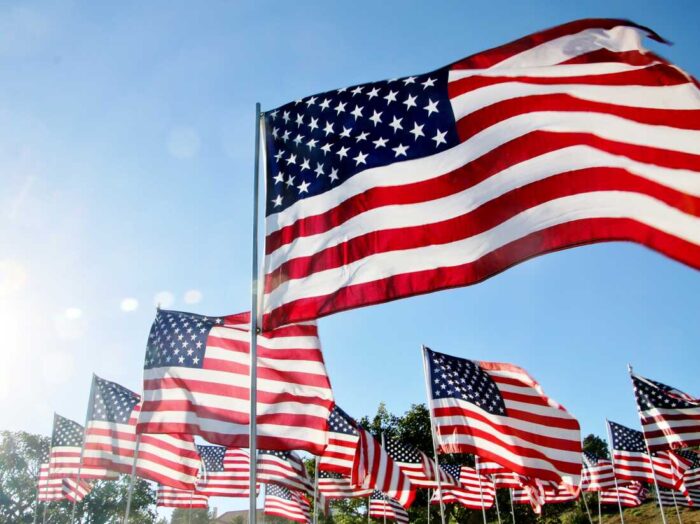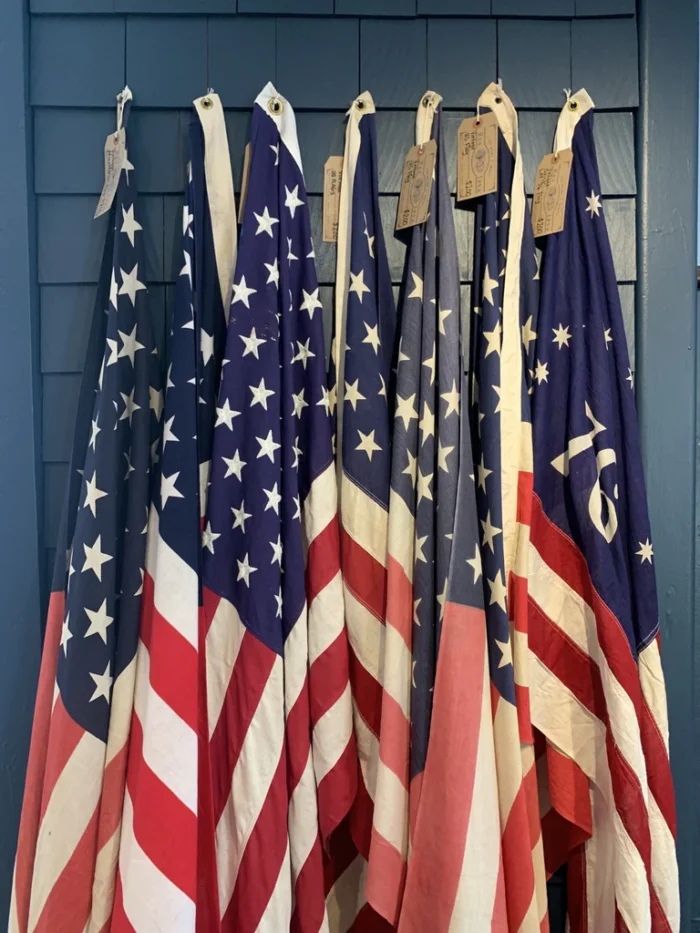
The Red, White, and Blue. Stars and Stripes. The Star Spangled Banner and Old Glory. Whatever name you call it, the American flag has a rich and storied history and is the idea behind the United States national anthem. It’s been a vital part of America for around two hundred years. A symbol and inspiration, it has represented America in good times and the bad, war times, rebellion, and triumph. It has taken on many incarnations before becoming the flag it is now. Let’s take a deep dive and explore the history and meaning behind one of the most recognizable flags in the entire world.
Meanings and Symbolism
The evolution of the American flag took shape from January 1, 1776, to the flag we know now, on August 21, 1960. In that time, there have been twenty-seven renditions of the banner. As the United States grew, so did the flag, incorporating more states. As a state joined the union, a star would be added to the flag.
You might love the flag, but do you know what the stars, stripes, and colors represent? The stripes on the flag depict the initial thirteen colonies, alternating between seven red stripes and six white ones. In comparison, the stars symbolize the union’s fifty states. The flag’s red, white, and blue also represent something important. Red stands for guts and valor. White shows innocence and purity, while blue means perseverance, vigilance, and justice.
In the Beginning

In 1775 during the American Revolution, the colonists hadn’t banded together under one American flag. Instead, they fought under regimental or unit flags mostly. Some flags included a coiled rattlesnake saying, “Don’t tread on me.” Another flag featured a pine tree with the slogan, “An appeal to heaven,” and the famous words of Patrick Henry, a Virginia patriot, “Liberty or Death,” could also be seen on an early rendition of a flag.
In 1776, an unofficial national flag was lifted by General George Washington to honor the recently assembled Continental Army. The camp was in Cambridge, so this flag went by the name Continental Colors or the Cambridge Flag.
Many people argue about the origin of the first flag. Although many historians have presented evidence that it wasn’t Betsy Ross that created the American flag, it was New Jersey politician Francis Hopkinson. The congressman supposedly designed the flag with thirteen stars, officially becoming the flag of the United States as of June 14, 1777.
Inspiration and Observance

The American flag has been the muse for many creative and patriotic endeavors. On September 14, 1814, following a British bombardment, Francis Scott Key, amateur poet, was so moved at the sight of the American flag over top Fort McHenry in Baltimore (still there today) that he penned “The Star-Spangled banner.” In 1931, It formally became the national anthem.
In 1892, the flag inspired Francis Bellamy and James B. Upham to compose, The Pledge of Allegiance. The first publication was in “The Youth’s Companion” magazine.
A Wisconsin teacher named Bernard Cigrand created the concept for a yearly flag day celebration on June 14, 1885. At this time, he held the first observance formally for his school. In 1916, Flag Day became an annual day of commemoration across America on this date when Woodrow Wilson proclaimed it. Cigrand retired as a teacher to pursue dentistry, but his love and respect for the American flag remained throughout his entire lifetime.
The original American flag is one of the most cherished artifacts in the Smithsonian National Museum of American History (located in Washington). You can have your slice of patriotism by purchasing an American flag from Flagdom at https://flagdom.com/american-flags and display your love of Country at your home, parades, and other observances. Wherever you place your banner, you can stand proud with your hand over your heart as you watch Old Glory fluttering in the wind.
Six American flags made it to the moon between the years 1969 to 1972. The LFA (Lunar Flag Assembly) is a kit of the American flag and its planting accessories. The flags were made from a nylon material and hung on horizontal bars and telescoping staff. The image of Neil Armstrong and the American flag will forever be etched in the minds of patriotic folks. However, he isn’t the only astronaut to plant one. The Apollo Missions twelve, fourteen, fifteen, sixteen, and seventeen all had someone set up an American flag on the moon. Five out of the six flags remain standing on the moon today.
Present Design

Our current flag was designed by a high school student in 1958. Robert G. Heft was seventeen and attended Lancaster High School in Ohio. There were talks about adding Alaska and Hawaii as new states to the union at this time. As part of an American history assignment, Heft took twelve and a half hours to design a fifty-star flag (representing the two new states to the forty-eight current ones). What’s extremely funny is that he received a B minus for his mark. Heft started to write letters and call the White House to inquire if the President could look at his flag. Two years afterward, when Alaska and Hawaii became new states, President Eisenhower told Heft that his design for the flag would be the model for the new fifty-star version. Heft was invited out to Washington, D.C., by the President to participate in a ceremonial flag raising at the Capitol. His teacher changed his mark to an A once the fifty-star flag was officially adopted.
The Future of the Flag
The most recent design of the American flag, since 1959, has lasted the longest as compared to the other designs. This is because there haven’t been any states joining the union since then. What’s in store for the future of the flag? I suppose it will depend on many factors. The U.S Army Institute of Heraldry has plans for a flag with fifty-six stars on it that would have a staggered star design like its predecessors. This, of course, will depend on if additional states are added, and only time will tell that tale.
The American flag represents hope, justice, democracy, and freedom. It also carries the memories of the men and women who fought and defended the principles that the flag represents in the past and today more than ever.
















